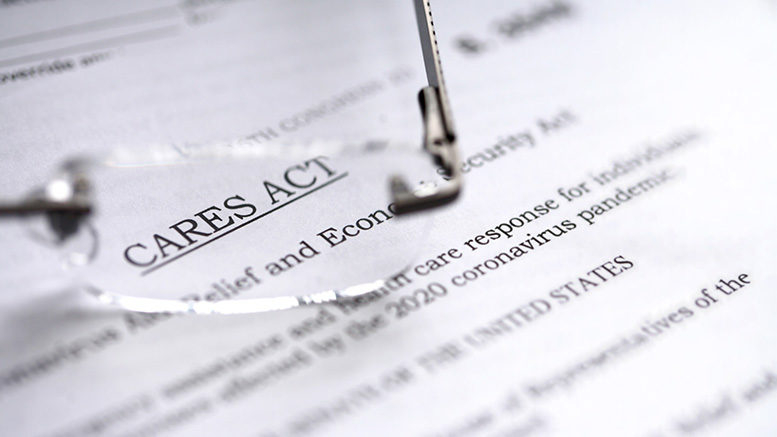With so much uncertainty over how colleges may use federal stimulus funding — and several colleges already disbursing some of that money — the American Association of Community Colleges (AACC) would like Congress to give higher education institutions some leeway if they act in good faith pursuant to the CARES Act.
During an AACC webinar Thursday that addressed implementing the recently enacted stimulus legislation and also presented the association’s priorities for an expected fourth stimulus bill, AACC officials said things remain unclear on how colleges can use CARES Act funding. For example, until late last week, education advocates thought undocumented students could receive these emergency grants, said David Baime, senior vice president for government relations and policy analysis. But they soon realized that the 1996 Welfare Reform Act prohibits cash benefits to undocumented individuals.
That realization threw “what we thought would be a pretty clear ability for colleges to provide these emergency grants to students into question,” Baime said.
The American Council on Education, an umbrella organization of higher education associations, including AACC, has asked the U.S. Education Department (ED) for clarification, he said.
Concerns over uncertainty
ED earlier this month began to award CARES Act funding to colleges in two waves, with the first grants going to colleges specifically to help students adversely affected by the current pandemic. The second wave will go to higher education institutions to help them address issues prompted by the pandemic. The department is expected to soon award that second wave of grants as well as more guidance on how colleges can use both sets of funds.
“We can’t know with certainty every aspect of what the Department of Education thinks can be done under this law,” Baime said. “It’s simply not possible for us to know at this point.”
It’s because of that uncertainty that AACC seeks some protection for its member colleges. One of AACC’s prime legislative objectives is to ask Congress to ensure that the department provides some kind of “safe harbor” for colleges “that are acting with their best intent and ability to implement this program, consistent with the law and congressional intent, and they should not be subject to any penalty or liability if they have, again, acted in good faith to implement this law,” Baime said.
AACC hopes to see that included in the next stimulus legislation that Congress is expected to work on, he said.
Other parts of CARES Act funding
Although ED is allowing colleges to determine the award amount they give to students through the student emergency fund, it has suggested that colleges could limit it to the maximum Pell Grant amount. “But, again, these are specifically phrased as recommendations and do not represent any sort of requirement on schools in terms of grant size,” said Jim Hermes, associate vice president for government relations.
In other stimulus funding, ED this week made available about $3 billion to governors through block grants that they can decide how to use to help those most affected by the COVID-19 crisis, including local education agencies and postsecondary education institutions. Some community college systems have already sent proposals to their governors, Hermes said.
He noted that eligibility for the governors’ funds requires “maintenance of effort,” meaning states cannot decrease their funding or use the federal money to simply replace state funding for the programs. However, the CARES Act does allow states to seek a waiver to that requirement, he said.
Although ED will disburse the bulk of the $12.5 billion provided through the CARES Act directly to higher education institutions, there is some funding for other programs — though how ED will disburse those funds is largely uncertain, Hermes said. For example, about 7.5 percent of funds (about $1 billion) will go to Title III and Title V institutions to address coronavirus needs. That money will be disbursed in proportion to colleges’ annual funding, he said.
“Beyond that, we don’t know how those awards will be made,” he added.
The same goes for the 2.5 percent of higher education funding (about $349 million) that will go to the Fund for the Improvement of Postsecondary Education program.

